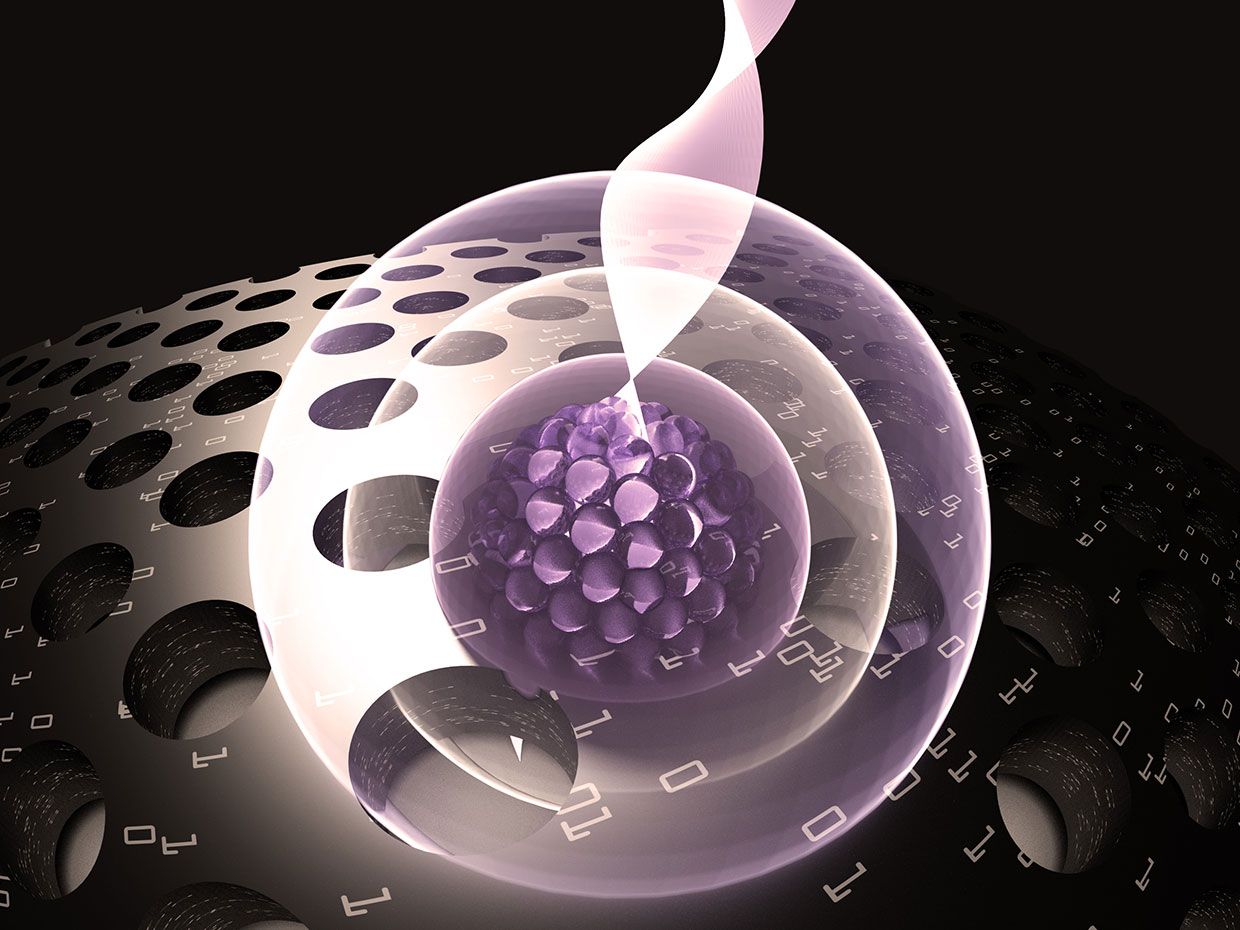A Photonic Circuit for Quantum Computers
Getting photons to interact is a key step toward using them as qubits
The foundational element of quantum computers is the qubit. Qubits can be any kind of particle that has quantum properties, such as an electron or a photon. For these qubits to accomplish their job in a quantum computer, they need to interact with each other in a quantum process known as entanglement.
While photons would make for great qubits because of their speed, they don’t like to interact with each other, or anything else for that matter, making it difficult to achieve quantum entanglement.
Now researchers at the University of Maryland and the Joint Quantum Institute have managed to solve this conundrum with their development of the first single-photon transistor using a semiconductor chip. The resulting device makes possible photon-photon interactions in a compact chip-integrated device, which was the key missing component of an integrated photonic quantum circuit.
In the journal Science, the researchers describe how they constructed their transistor from a semiconductor material called gallium arsenide (GaAs). This thin membrane is only 160 nanometers thick with a periodic array of tiny holes punched into it. But several holes are left absent in the center.
They combined this semiconductor membrane with quantum dots, which in this case are made of a different semiconductor material called indium arsenide (InAs). The quantum dots sit in the middle of the hole array. The hole array forms something called a photonic crystal, which is a material that can trap light using a mechanism called Bragg reflection where light bounces around the trap. In this design, the quantum dot does not trap the photons but the cavity traps them.
What the quantum dot in this arrangement does is store information about the photon. The quantum dot traps a single electron inside, which has spin properties, according to Shuo Sun, lead author of the paper and a postdoctoral research fellow at Stanford University, who was a UMD grad student at the time of the research.
The spin of the electron can be considered a quantum property that is analogous to the motion of a spinning top. If there is no photon coming, the electron is spinning one way (for example, clockwise), but if there is a single photon coming to the cavity, the spin will be spinning another way (counterclockwise). Through this mechanism, the quantum dot stores information about the incoming photon.
“The quantum dot contains a single electron spin, which acts as a memory element (similar to a bit on a hard drive),” explained Edo Waks, professor at UMD and JQI fellow. “When the first photon reflects, it flips the spin, which records the fact that it was there. Later, the spin controls whether the second photon reflects or transmits.”
All of this manages to overcome the one main problem in using photon-based qubits: photons barely interact with the environment. What the scientists have done is design photonic circuits (similar to electronic wires) that can guide and trap photons for a long enough time before material absorption or photon leakage happens.
“We need to make photons interact with each other in the process of entanglement,” said Sun. “We for the first time demonstrate a chip-integrated device that allows one photon to switch other photons, a key ingredient for interacting two photons for entanglement.”
While this work represents a proof-of-concept, according to Waks, the scientists are thinking of ways to connect and integrate multiple transistors and quantum gates together to form small-scale quantum photonic circuits. “This poses significant challenges since our current device yield is not high and we have to look for many devices in order to find one that has good performance,” said Sun.
In the far future, the scientists envision that such a compact photonic-based quantum processor could be very useful for quantum networks and quantum communications, since photons are a natural choice as information carriers in the world of fiber-optic communication technology.
Dexter Johnson is a contributing editor at IEEE Spectrum, with a focus on nanotechnology.
